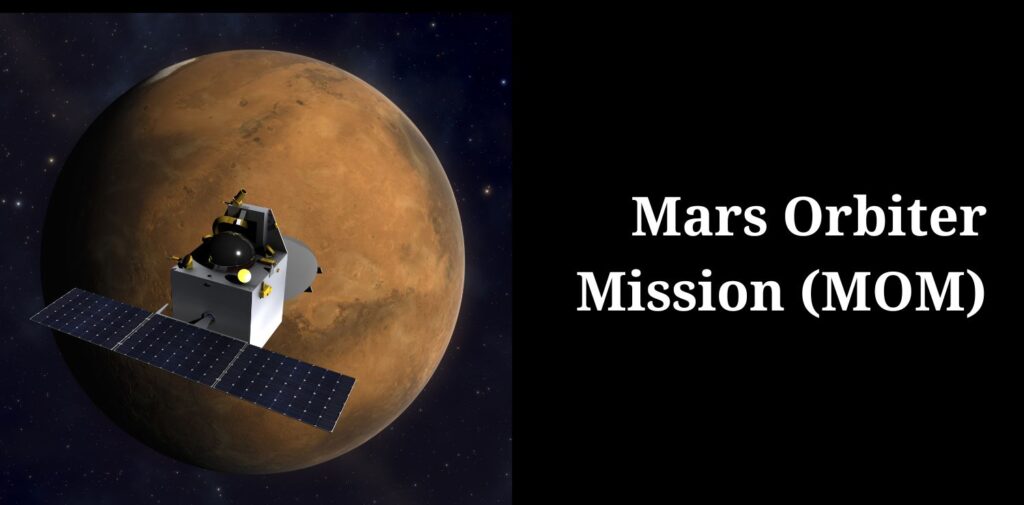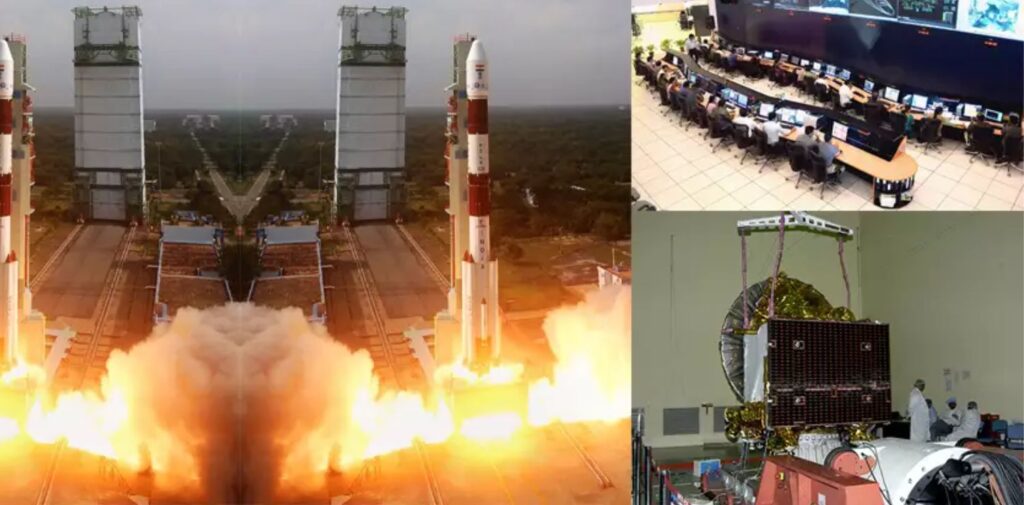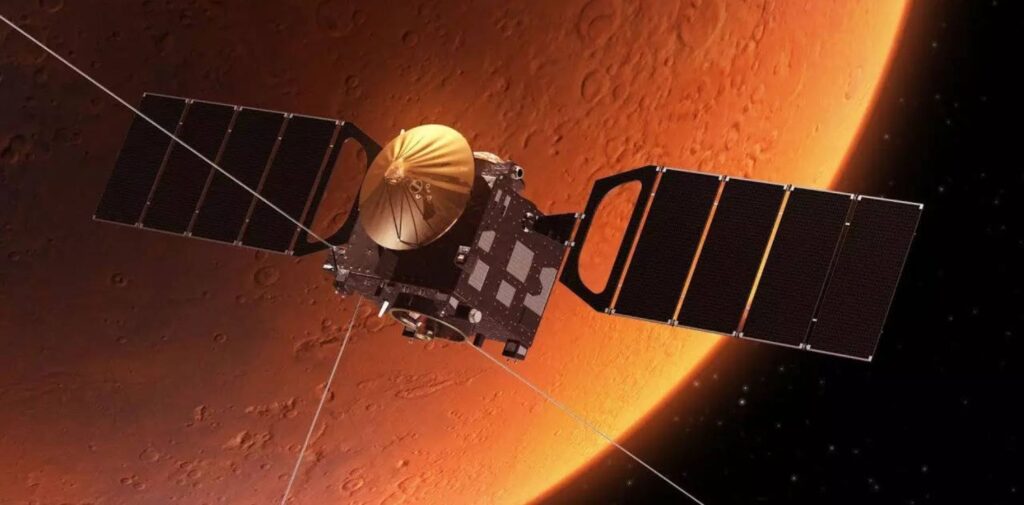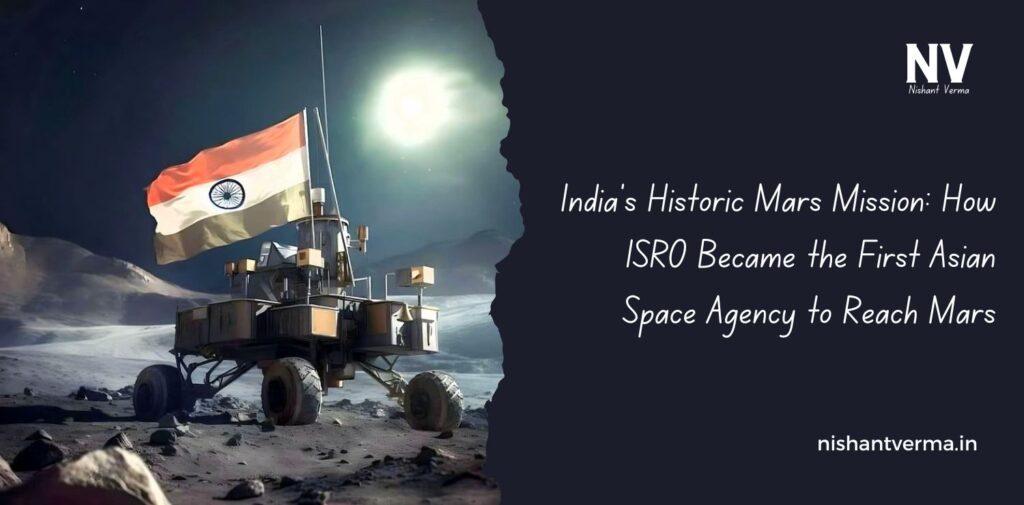In September 2014, India’s space agency, the Indian Space Research Organisation (ISRO), achieved a remarkable milestone in space exploration. The Mars Orbiter Mission (MOM), also known as Mangalyaan, successfully entered the orbit of Mars, making India the first Asian country to reach the Red Planet. This achievement was not just a technological success, but it also marked India’s growing prominence in space exploration on the global stage. In this article, we will take a closer look at India Historic Mars Mission, the challenges it faced, and the impact of this accomplishment.
What is the Mars Orbiter Mission (MOM)?
The Mars Orbiter Mission (MOM) was India’s first interplanetary mission, designed to explore Mars, its atmosphere, and its surface. The mission was launched with the aim to collect valuable data about the Martian atmosphere, surface, and mineral composition. It also aimed to demonstrate India’s capabilities in interplanetary exploration.
MOM was launched by ISRO on November 5, 2013, aboard a Polar Satellite Launch Vehicle (PSLV-C25) from the Satish Dhawan Space Centre in Sriharikota, India. The spacecraft was named Mangalyaan, which means “Mars Craft” in Hindi. The main objectives of the mission were:
- To study the Martian atmosphere: Specifically, MOM aimed to detect the presence of methane in Mars’ atmosphere, which could provide clues about the possibility of life on the planet.
- To map the surface of Mars: The spacecraft was equipped with cameras and sensors to capture detailed images of Mars’ surface, including its mountains, valleys, and polar ice caps.
- To study the planet’s mineral composition: Mangalyaan was also designed to analyze the minerals present on Mars’ surface, such as the presence of iron oxide, which gives Mars its red color.

Journey to Mars
The journey to Mars was a long and challenging one. After being launched in November 2013, Mangalyaan traveled for nearly 300 days to reach Mars. The spacecraft had to cover a distance of over 650 million kilometers in space, which is about 400 million miles.
One of the biggest challenges faced by ISRO was the distance. Mars is much farther from Earth than other planets that have been explored. This meant that the spacecraft had to travel through the void of space for a very long time, with no chance of repairs or adjustments once it was in flight. It was a one-way trip for the spacecraft, and ISRO had no way of controlling or fixing it after launch.
The spacecraft had to perform several critical maneuvers during its journey, including two major engine burns that adjusted its speed and trajectory to ensure it would reach Mars. The first maneuver was carried out just days after launch, and the second was done when the spacecraft was nearing Mars. These maneuvers were critical for the spacecraft to enter the correct orbit around Mars.
A Historic Success: Mars Orbit Insertion
On September 24, 2014, after a journey of nearly 300 days, Mangalyaan reached Mars. The most critical moment of the mission came when the spacecraft needed to enter Mars’ orbit. This was called Mars Orbit Insertion (MOI). During this process, Mangalyaan had to slow down to match the speed of Mars’ orbit, so it wouldn’t fly past the planet.
The process was difficult and risky because the spacecraft had to make the orbit insertion at a specific time and speed. If it missed the mark, it could have either gone too fast and passed by Mars or too slow and crashed into the planet. Thankfully, the maneuver was a success. Mangalyaan entered Mars’ orbit, making India the first Asian country to reach the Red Planet.
India also became the first country in the world to succeed in its very first attempt to reach Mars. Many other space agencies, including NASA and the Soviet Union, had tried to reach Mars before, but not all of them had been successful on their first attempts.

Achievements of MOM
The success of Mangalyaan was a significant achievement for India and ISRO. Here are some of the key achievements of the mission:
- First Asian Country to Reach Mars: As mentioned earlier, ISRO became the first Asian space agency to reach Mars. This was a historic moment not only for India but also for the entire continent of Asia.
- First Country to Succeed in First Attempt: India became the first nation in the world to successfully send a mission to Mars on its very first try. This was a remarkable accomplishment, as many other countries had faced failures in their first attempts, including the United States and the Soviet Union.
- Low-Cost Mission: One of the most impressive aspects of the Mars Orbiter Mission was its cost. The entire mission was completed at a very low cost of about $74 million (₹450 crore). This made it the least expensive Mars mission ever. This achievement highlighted ISRO’s ability to carry out complex space missions at a fraction of the cost of other space agencies like NASA.
- Successful Data Collection: After entering Mars’ orbit, Mangalyaan successfully sent back valuable data to Earth. The spacecraft sent high-resolution images of Mars’ surface and polar ice caps, and it also helped scientists study the planet’s atmosphere, which was found to be thin and mostly composed of carbon dioxide.
Challenges Faced by ISRO
Although Mangalyaan’s success was a historic achievement, it did not come without challenges. Some of the main difficulties faced by ISRO included:
- Limited Budget: One of the most challenging aspects of the mission was its limited budget. While NASA’s Mars missions often cost billions of dollars, ISRO was able to achieve the same goals with a much smaller budget. This required efficient use of resources and innovative engineering solutions.
- Distance and Duration: The long journey to Mars meant that the spacecraft had to travel vast distances and survive harsh conditions in space. The spacecraft had to be designed to withstand radiation, temperature extremes, and the vacuum of space for many months.
- Mars’ Harsh Environment: Mars is a harsh planet. The Martian atmosphere is thin, and its surface experiences extreme temperatures. The spacecraft had to be designed to cope with these conditions to ensure its instruments and electronics remained functional.
- Communication Delay: Due to the vast distance between Earth and Mars, there is a significant delay in communication between the two planets. This made it difficult for ISRO to make real-time adjustments or decisions about the spacecraft’s operations. It also made it challenging to monitor the spacecraft’s progress closely.

Impact of Mangalyaan
The success of Mangalyaan had a significant impact on ISRO and India as a whole. Here are some of the lasting effects of this achievement:
- Boost to India’s Global Image: The success of Mangalyaan put India on the global map as a space exploration leader. It showed the world that India had the technological expertise to carry out complex space missions, making it an important player in space research.
- Inspiration for Future Missions: Mangalyaan’s success paved the way for future space exploration missions. ISRO’s success in Mars exploration opened up new possibilities for India to explore other planets, including Venus and even the Moon.
- Encouraging Innovation: The low-cost nature of the Mars mission proved that it is possible to carry out ambitious space missions on a tight budget. This has encouraged other countries, especially developing nations, to consider space exploration as a possibility.
- Scientific Advancements: The data collected by MOM has contributed to a better understanding of Mars’ atmosphere and surface. This information is crucial for future missions to Mars, including the search for signs of past life on the planet.
Conclusion: India Historic Mars Mission
India’s Mars Orbiter Mission (Mangalyaan) was a historic achievement that demonstrated ISRO’s capabilities in space exploration. With its successful entry into Mars’ orbit, India became the first Asian country to reach the Red Planet and the first nation to do so on its first attempt. Despite limited resources and numerous challenges, ISRO’s engineers and scientists worked tirelessly to make the mission a success. Mangalyaan not only boosted India’s global standing in space technology but also inspired future generations of scientists and engineers to explore the vast possibilities of space.




